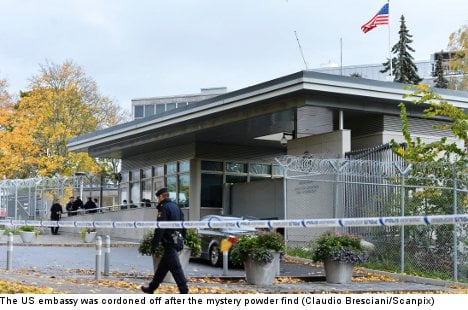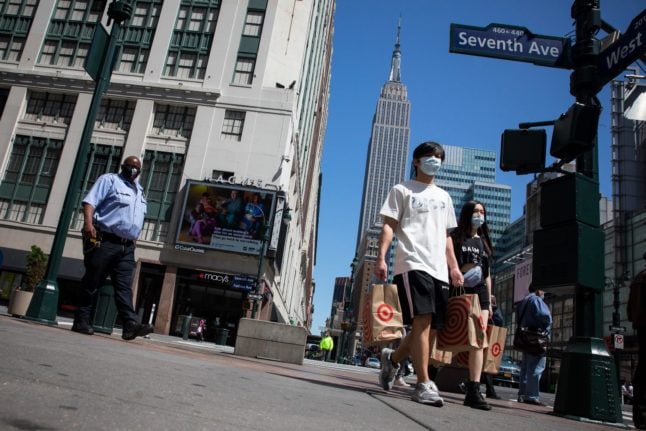Stockholm police duty officer Fredrik Nylen would not reveal what the powder was because of an ongoing investigation, but said it was “highly toxic and corrosive”.
”I can’t say exactly what it is at this time, but it’s been confirmed that it’s poisonous,” Nylen told the Expressen newspaper.
“We’re now trying to find out who sent it. You have to go with what you have and that means tracing the letter back in time.”
Police have classified the incident as a case of “spreading a poison or virus”.
Embassy staff discovered the powder in an envelope early Wednesday and alerted the police.
“No one suffered any injuries,” Nylen told the AFP.
Staff and members of the public were evacuated shortly after the discovery, which took place around 11.30am, but were allowed to return inside the building after several hours.
Embassy spokesman Jeff Anderson told AFP a “preliminary investigation” had been opened and that the evacuation was a precautionary measure.
“Everyone is fine. But when any type of security incident occurs we take it very seriously. It affects us all,” Andersson told the TT news agency.
Speaking with The Local earlier in the day, Anderson said there was no information about any threats issued against the US mission.
The US embassy in Stockholm has some 170 employees, although it remains unclear how many were in the building on Wednesday at the time of the incident.



 Please whitelist us to continue reading.
Please whitelist us to continue reading.
Member comments